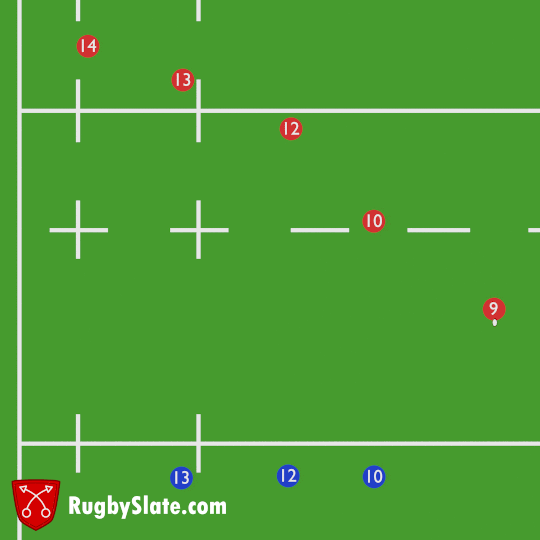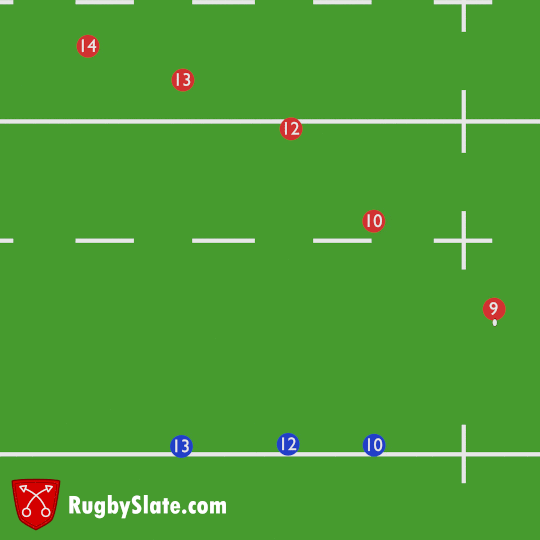The Drift Defence
The drift defence is one of the two main types of defensive strategies in rugby (the other being the blitz defence). The basic concept behind the drift defence is to go “up and out” as a defensive line; once the ball carrier has past, the defender marking them should push outward to cover the receiver whilst the rest of the defensive line also shifts outward. This can be seen in the example below, the defence initially starts by closing down the space and then once the ball is passed, start to drift outwards.
As you can see in this example, the attacking team has an additional player, meaning they should be able to produce an overlap on the outside, however the defence makes up for this by not committing to tackles unless totally necessary. The attacking side receives the ball relatively deep and passes out quiet early also, so this provides the defence time to start to drift outwards, letting the inside defender now take the outside attacker. This leads to the numbers equalling out and therefore is a much better situation for the defence to be in.
As noted above, the drift works well for when there is a small numerical advantage for the attack out wide (typically a 1 or 2 player overlap but with at least 2 or 3 passes to get there). Another time the drift works well, is when the defence wants to shepherd the attack out wide, this could be because they want to isolate the ball carrier, or they want to try to force the attack in to touch or they want to try to tire the attacking forwards by making them run a long distance between breakdowns. The drift defence does all these things by effectively allowing the attack to go wide and squeezing them against the touchline. It has been said that the touchline can be used as a “16th defender who never misses a tackle and always gets the turnover”. Below is an example of the drift being used in that case.
The key to using the drift defence is communication, every situation is different and the defence must act as a single unit to be effective; the communication primarily consists of indicating which player is being taken by who. This is critical as if one player starts to turn their attention to the attacker outside them but their inside defender is not able to drift across, a gap will appear in the midfield which the attack will easily exploit. An example of this is shown below.
Another error that very frequently occurs is a defender not trusting their inside defender making the tackle and getting drawn in to tackling the inside attacking effectively leaving the outside attacker unmarked. In the example below, 13 does just that and steps in to tackle the attacking 13, whilst leaving 14 totally unmarked when the tackle on the attacking 13 could have been made by the drifting defencive 12.
The drift defence is seen at all levels of rugby and is a very important skill to master. It is a skill that must be learnt as a team as the drift defence is only ever as good as the weakest player. Experienced players and leaders should be vocal and organise the defence so that players who may need guidance know exactly what to do.




